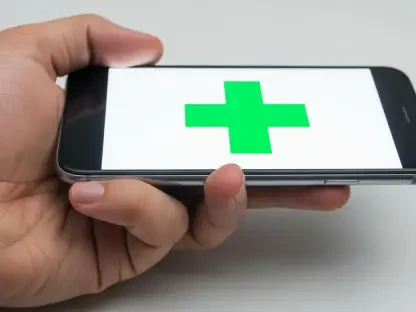As millions of people worldwide commit to Dry January by abstaining from alcohol for a month, the benefits of reducing alcohol intake extend beyond temporary health improvements to long-term success in various aspects of life, including business. With a significant portion of the population reporting increased alcohol consumption during the COVID-19 pandemic, health experts are urging individuals to reconsider their drinking habits. This is particularly relevant in areas like Colorado, where binge drinking rates are higher than the national average. Insights from Dr. Matthew Husa, Chief Medical Officer at UnitedHealthcare of Colorado, highlight how reducing alcohol consumption can positively impact both physical health and professional performance.
1. Health Rewards of Drinking Less
Keeping alcohol use to a minimum can initiate a series of positive changes in the body. Research indicates that reducing alcohol consumption can lead to better sleep quality, improved mood, and enhanced cognitive function. Instead of the foggy haze that often accompanies drinking, individuals can experience clearer thinking and increased productivity. Additionally, the physical benefits are hard to ignore. Limiting alcohol intake can contribute to weight loss, as alcohol is often high in calories and can stimulate appetite, leading to overeating.
Furthermore, reducing alcohol consumption significantly lowers the risk of several types of cancer. According to the National Cancer Institute, excessive alcohol use is linked to an increased likelihood of developing throat, esophageal, breast, and colorectal cancers. By drinking less, individuals can take a proactive approach to their health, reducing the chances of these serious illnesses. The cumulative effect of these health improvements also translates to better performance in professional settings, where clarity of thought and overall well-being are crucial.
2. Keeping a Journal to Track Your Feelings
Understanding the motivations behind alcohol consumption is a critical step in addressing and reducing intake. One effective strategy is to keep a journal to document feelings and circumstances that lead to the desire for a drink. Over the course of a week, individuals can note the physical or emotional triggers that prompt them to reach for alcohol. Feelings of loneliness and boredom are common catalysts, but stress, sadness, anxiety, and irritability can also play significant roles.
By reviewing the journal entries at the end of the week, patterns and common themes may emerge, providing valuable insights into one’s drinking habits. With this understanding, it becomes easier to brainstorm and implement alternative coping mechanisms. For instance, if stress is a prevalent trigger, engaging in stress-relief activities such as exercise, meditation, or hobbies can serve as more constructive outlets. By replacing the habit of drinking with healthier alternatives, individuals can gradually rewire their behavioral responses.
3. Practicing Mindful Drinking
Mindful drinking involves becoming more conscious of when and why alcohol is consumed, rather than engaging in automatic, habitual behavior. For many people, drinking can become an unthinking routine, such as having a glass of wine while cooking dinner or a beer while watching TV. By pausing to question whether the desire for a drink is genuine or simply habitual, individuals can begin to alter these patterns.
If upon reflection, the urge to drink is found to be habitual, one can focus on changing the routine. Mindful drinking encourages individuals to savor the experience of drinking if they choose to do so, making it a deliberate and enjoyable activity rather than a mindless habit. This approach fosters a healthier relationship with alcohol, allowing for more controlled and intentional consumption.
4. Changing Your Routine
Breaking established routines that involve alcohol consumption can be an effective way to reduce intake. If happy hour typically starts at 5 p.m., consider pushing it back to 6:30 or 7:00 p.m. During the interim, engage in activities that serve as distractions, such as going for a walk, hitting the gym, or immersing in a good book or magazine. Initially, the urge to drink may be strong, but over time, altering the routine can help diminish these cravings.
It takes practice and persistence to change ingrained habits, but the benefits are tangible. By filling the time with other fulfilling activities, the dependency on alcohol as a means of relaxation or entertainment can be reduced. This shift not only contributes to better health but also brings about a sense of accomplishment and self-control.
5. Trying Breathing Exercises
When stress, anxiety, or irritation trigger the urge to drink, diaphragmatic breathing, also known as box breathing, can be a powerful tool for relaxation. This deep-breathing technique calms the central nervous system and helps alleviate tension. To practice box breathing, follow these steps:
- Sit or lie down and slowly exhale all the air from your lungs.
- Inhale through your nose for a slow count of four. Aim to fill your lungs and stomach, not just expand your chest.
- Hold your breath for a count of four.
- Exhale for another count of four.
- Hold your breath again for a count of four.
- Repeat the entire sequence three or four times.
By practicing this sequence, individuals can achieve a state of calm and relaxation, often negating the need to turn to alcohol as a coping mechanism. The practice of controlled breathing can be integrated into daily routines, providing a reliable strategy for managing stress and maintaining a clear, focused mind.
6. Swapping Alcohol for Nonalcoholic Beverages
Socializing without alcohol can present challenges, especially when surrounded by friends, family, or coworkers who are drinking. To navigate these situations, consider ordering nonalcoholic beverages that mimic the appearance of alcoholic drinks. There are numerous options available, from club soda with fresh lime to nonalcoholic versions of popular cocktails, such as a virgin margarita or a nonalcoholic beer.
Choosing these alternatives allows individuals to partake in social activities without feeling left out or drawing attention to their reduced alcohol consumption. The key is to find beverages that are satisfying and enjoyable, making the experience of socializing without alcohol just as pleasurable. This strategy supports long-term goals of drinking less while still fostering social connections and engagements.
7. The Bottom Line
As millions around the world embrace Dry January, abstaining from alcohol for a month, they discover that the advantages of cutting back on alcohol go beyond temporary health perks. It leads to long-term success in numerous areas of life, including professional spheres. During the COVID-19 pandemic, a considerable number of people reported an increase in alcohol consumption. Health experts are now urging individuals to reassess their drinking habits. This issue is particularly pronounced in Colorado, where binge drinking rates surpass the national average. Dr. Matthew Husa, Chief Medical Officer at UnitedHealthcare of Colorado, provides valuable insights on this matter. He emphasizes that reducing alcohol intake can significantly enhance both physical health and job performance. It’s a call to action that holds special relevance in today’s world where health and productivity are more interconnected than ever. As we move forward, the message is clear: reconsidering our relationship with alcohol can yield profound benefits in both personal and professional realms.









